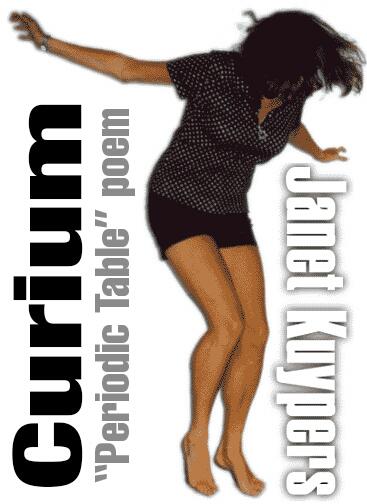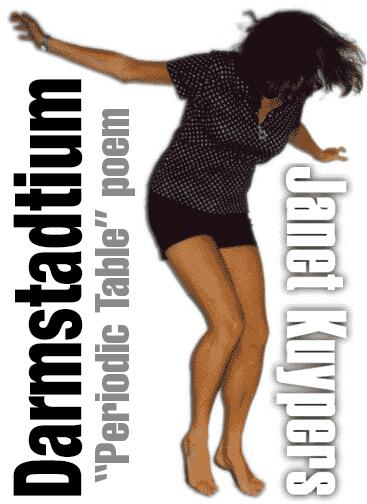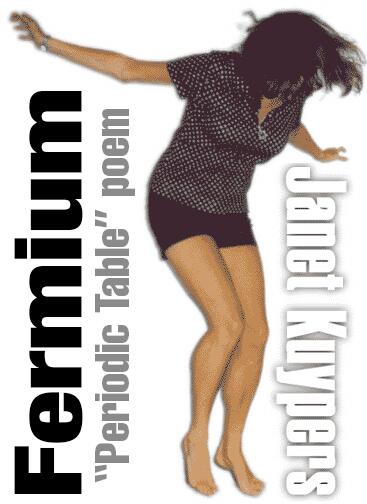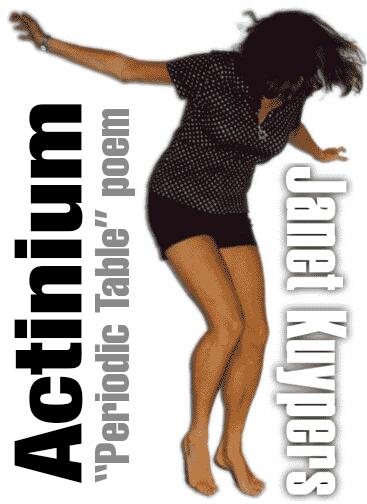Strontium
Janet Kuypers
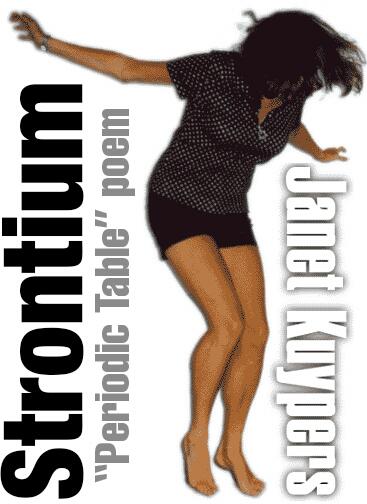
from the “Periodic Table of Poetry” series (#038 Sr)
7/2/13
People seem to think
that they need to eat
a ton of red meat
in order to be strong.
They think eating slaughtered
animal is the only way
a human being is capable
of getting themselves protein.
And I know it may be a tightrope walk
to get what you need —
I know how you
can turn a flame
into satan red
(but that means
we use you
in red flares, or
even red fireworks)…
I know how a part of you
can turn radioactive
(like when the Chernobyl explosion
threw Strontium 90 into the air:
but yeah, we’ve learned,
and can use that Strontium 90
in cancer therapy)…
And since Strontium
can get into your bones
(since it’s similar to calcium),
salt Strontium ranelate
treats osteoarthritis.
The thing is, plants are higher
in Strontium than meat,
and because it’s like calcium
it stays in our bones.
Because when we tested
ancient bones,
Austrian researchers
suggested
that Roman gladiators
were
vegetarians.
(Actually,
they ate
mostly barley,
beans, and
dried fruit.)
So yeah,
the strong,
ruthless
Roman gladiators
(the confident,
self-assured
Roman gladiators)
were
vegetarians.
Sorry, but I’ve heard
of how run down firemen
started feeling better
after they cut out meat
(metaphorically, I mean,
they didn’t actually cut any meat,
no animals were harmed
in this experiment
in making people healthier)…
Because if just the right Strontium
can help your bones,
and it is more common
in plants than animals,
maybe people can realize
that they don’t need to eat
a ton of red meat
in order to be strong.
Because with a plant-based diet,
a little Strontium
can go a long way.

